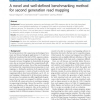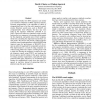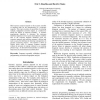BMCBI
2011
13 years 10 months ago
2011
Background: Second generation sequencing technologies yield DNA sequence data at ultra high-throughput. Common to most biological applications is a mapping of the reads to an almo...
ISMB
1996
14 years 7 months ago
1996
Determining whether two DNA sequences are similar is an essential component of DNA sequence analysis. Dynamic programming is the algorithm of choice if computational time is not t...
ISMB
1998
14 years 8 months ago
1998
DNA sequence analysis depends on the accurate assembly of fragment reads for the determination of a consensus sequence. This report examines the possibility of analyzing multiple,...


